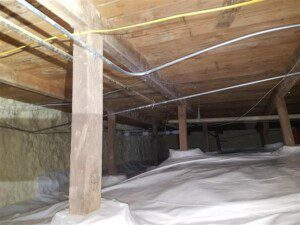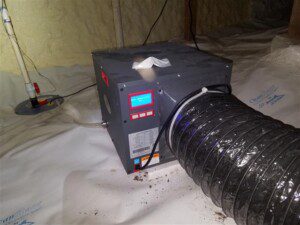
In this article we will be focusing on ventilation requirements and building system techniques used for residential building structures that have a crawlspace type of foundation. The majority of crawlspace foundations are supported by poured concrete, or masonry block perimeter foundations. However, it is common to find 19th and early 20th century homes with a perimeter post and beam wood foundation structure, and a crawlspace below.
Most crawlspaces are positioned over a dirt or gravel floor, and some have a poured concrete floor. Unlike basements, most crawlspaces are not considered to be part of the living space, and are only accessed for inspection or repair purposes. Many modern homes are built with crawlspaces since they are less expensive to build compared to homes with basements, and crawlspaces are a convenient location to install building components such as water supply and drain pipes, HVAC distribution ducts, and electrical wiring.
Since crawlspaces are not considered to be living space, and are not meant to be supplied with conditioned air, ventilation considerations are important. Lack of proper ventilation can lead to condensation and mold growth issues, which in some cases can lead to dry rot and wood decay of the floor structure components.
Current building standards require that the minimum net area of ventilation openings for vented crawlspaces shall not be less than 1 square foot per 1,500 square feet of under-floor space when there is a Class 1 vapor barrier installed. A crawlspace that does not have a vapor barrier installed shall not have no less than 1 square foot for each 150 square feet of under-floor space area. There should be a vent opening at least 3 feet from each foundation corner to ensure proper cross ventilation.

In some cases, the best option for a crawlspace with ground water and humidity issues is to encapsulate it, and create an unvented space. In the case of ground water and humidity issues, other systems may also need to be installed prior to encapsulation, such as drainage tile, sump pump and dehumidification systems.
Check out the video below for more information about unvented crawlspaces.
